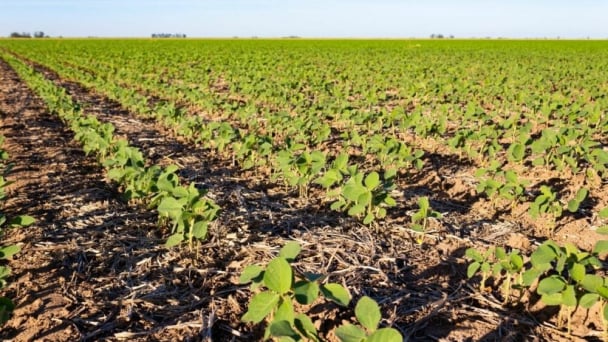May 17, 2025 | 19:34 GMT +7
May 17, 2025 | 19:34 GMT +7
Hotline: 0913.378.918
May 17, 2025 | 19:34 GMT +7
Hotline: 0913.378.918
The dawn of extreme soybean crush capacity in the United States has arrived. The US Department of Agriculture said in its Jan. 2 Fats and Oils: Oilseed Crushings, Production, Consumption and Stocks report that 6 million tons (200 million bushels) of soybeans were crushed in November, up 5.4% from 5.69 million tons (190 million bushels) crushed in the same month last year.
Crude soybean oil produced in November was 2.325 billion pounds, up 5.7% from 2.2 billion pounds in November 2022, and once refined soybean oil produced was 1.707 billion pounds, 4.5% higher than the 1.663 billion pounds a year earlier.
To put these numbers into better perspective, the volume of soybeans crushed in November was 8.3% higher than the 2018-22 average for the same month. Crude oil production in November was 8.5% higher than its five-year average. And the latest production number of once refined soybean oil was 10% higher than the average.
This upward trend in soybean crush is a reflection of the industry’s progress in broadening its domestic crush capacity. For the 2021-22 marketing year, the American Soybean Association indicated the United States had around 60 crushing plants and was able to process approximately 2.2 billion bushels of soybeans annually. In 2023, expansions at three existing plants along with the opening of a new facility in North Dakota was expected to increase the domestic crushing capacity by 300,000 bushels per day. In its December World Agricultural Supply and Demand Estimates, the USDA forecast 2023-24 US soybean crushings at 2.3 billion bushels.
The trade is expecting to expand soybean crushing capacity even further with the addition of 12 new plants and 5 planned expansions by 2026, potentially increasing the crush capacity by another 1.462 billion bushels per day.
The main driver behind the crush capacity expansion is the robust demand for soybean oil, especially from the renewable diesel sector as the US Environmental Protection Agency (EPA) continues to mandate biofuel blending targets for refiners or importers of gasoline or diesel fuel. The vigorous demand also may be behind the sharply lower soybean oil stocks that fell 41% between June and September last year, according to data compiled by the National Oilseed Processors Association. The most recent five-year average rate of decline for this period was 13%.
In the December WASDE, the USDA forecast soybean carryover on Sept. 1, 2024, at 245 million bushels, down 9% from 268 million bushels in 2023 and down nearly 11% from 274 million bushels in 2022. The latest USDA projection for the carryover of US soybean oil on Oct. 1, 2024, is 1.577 billion pounds, down 1.6% from 2023 and down about 21% from 1.991 billion pounds in 2022.
But despite all signs that domestic demand for soybean oil is strong and likely to grow even more, nearby CME Group soybean oil futures have fallen more than 40% from record highs that neared 90¢ a pound in the spring of 2022. Currently, the March contract has been rangebound between 48¢ and 55¢ a pound since October. The additional capacity coming online along with surging imports, especially of competitive feedstocks for biofuel use, has certainly applied pressure to the soybean oil market.
Another lingering factor weighing on soybean oil prices is the potential for weakening renewable fuel policies. Last year, the EPA proposed implementing a biofuel credit allowance for electric vehicles. While the proposal was not included in the updated mandate for Renewable Fuel Standards, the recent spotlight on supporting electric vehicle integration and bolstering infrastructure to support the transition away from fuel-based vehicles may be a concerning element, especially as the soybean processing capacity in the United States has its foot firmly pressed on the gas pedal.
(WG)

(VAN) Fourth most important food crop in peril as Latin America and Caribbean suffer from slow-onset climate disaster.

(VAN) Shifting market dynamics and the noise around new legislation has propelled Trouw Nutrition’s research around early life nutrition in poultry. Today, it continues to be a key area of research.

(VAN) India is concerned about its food security and the livelihoods of its farmers if more US food imports are allowed.

(VAN) FAO's Director-General emphasises the need to work together to transform agrifood systems.

(VAN) Europe is facing its worst outbreak of foot-and-mouth since the start of the century.

(VAN) The central authorities, in early April, released a 10-year plan for rural vitalization.

(VAN) Viterra marked a significant milestone in its carbon measurement program in Argentina, called Ígaris, reaching 1 million soybean hectares measured.